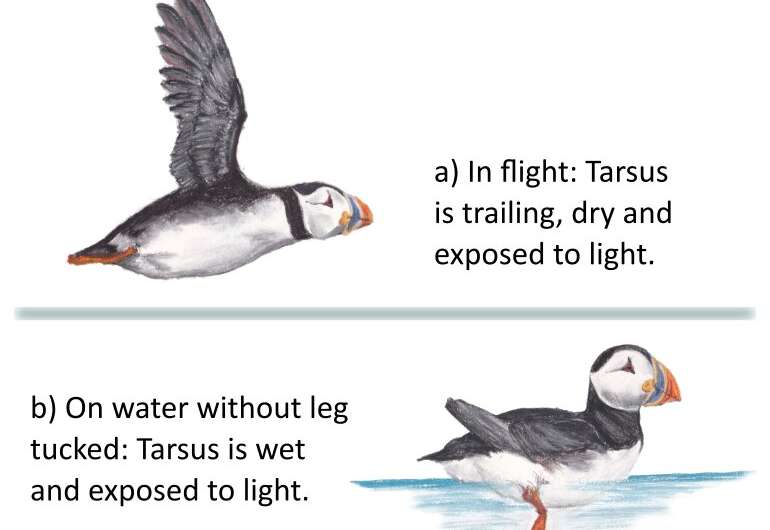Study finds flightless puffins vulnerable to winter storms for two months a year

Puffins lose the ability to fly for up to two months every year—twice as long as previously believed. Researchers at University College Cork (UCC) suggest the seabirds are vulnerable to winter storms due to their inability to fly after molting their feathers.
Puffins must shed and regrow their feathers when they wear and lose shape, a process known as molt. When they molt their wing feathers, they also lose the ability to fly, leaving them bound to the water surface.
The timing and location of the flightless molt of puffins has long been a mystery to scientists because it occurs when puffins are far from land and out of sight. However, the Marine Ecology Group from the school of Biological Environmental and Earth Sciences and the MaREI Science Foundation Ireland Research Centre at UCC fitted tracking devices to the birds to keep tabs on their activity.
The group, in collaboration with researchers from the UK and Norway, put tiny loggers on the legs of puffins to record their behavior. Lead author Jamie Darby said, “These loggers record time spent on the water or in flight every 10 minutes over the course of a year. We were able to look for extended periods of time when puffins don’t fly at all to study where and when they were flightless.”
The results, published in the journal Ecology and Evolution, show that puffins were flightless from one to two months per year.
“This molt occurs when puffins are way out in the Atlantic, and when weather conditions can be dangerous for a flightless seabird. Puffins are in decline, and often wash up dead on our coasts following severe weather. Winter cyclones in the North Atlantic are likely to become more frequent and more severe with climate change,” Darby said, in explaining the significance of the results.
More information:
Jamie Hendrick Darby et al, A new biologging approach reveals unique flightless molt strategies of Atlantic puffins, Ecology and Evolution (2022). DOI: 10.1002/ece3.9579
Citation:
Study finds flightless puffins vulnerable to winter storms for two months a year (2022, December 13)
retrieved 13 December 2022
from https://phys.org/news/2022-12-flightless-puffins-vulnerable-winter-storms.html
This document is subject to copyright. Apart from any fair dealing for the purpose of private study or research, no
part may be reproduced without the written permission. The content is provided for information purposes only.
For all the latest Science News Click Here
For the latest news and updates, follow us on Google News.

